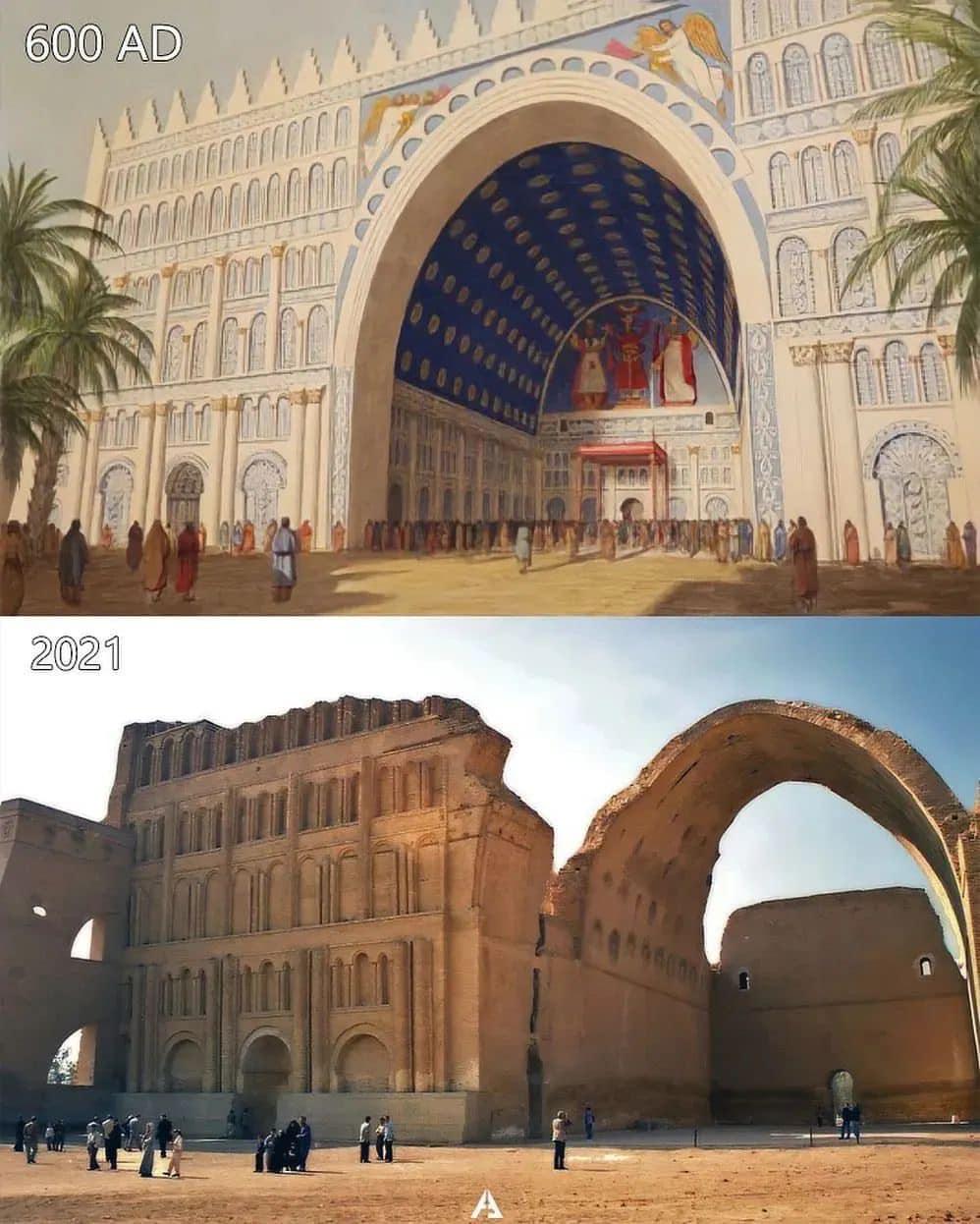
The Arch of Ctesiphon in modern-day Iraq is the only remaining structure of ancient Ctesiphon, built in 242–272 AD during the Sassanid Empire. Considered a landmark in architecture history, the Persian masterpiece was on the brink of collapse in 2021 when Iran intervened to restore it. [1246×998]
by Party_Judgment5780

1 Comment
The arch, built entirely of baked bricks without any form of reinforcement, measures approximately 37 meters high, 26 meters wide, and 50 meters long, making it the second-largest single-span vault of unreinforced brickwork in the world (after the Gavmishan Bridge in Iran).
The structure formed the main audience hall of the imperial palace complex, where the Persian kings held court and received foreign envoys, and it once stood as part of a larger architectural ensemble that included courtyards, living quarters, and gardens. Its immense barrel vault and parabolic curve demonstrate the advanced engineering and aesthetic achievements of Sassanid architecture, influencing Islamic and Byzantine architectural styles.
The arch partially collapsed in the 19th and 20th centuries, with major structural failures continuing into the 21st. In 2019, a portion of the façade fell. Finally in 2021, when the arch was facing an imminent full collapse, Iran intervened to restore it, which stabilized and preserved it.
More info:
[https://en.wikipedia.org/wiki/Taq_Kasra](https://en.wikipedia.org/wiki/Taq_Kasra)
[https://en.wikipedia.org/wiki/Ctesiphon](https://en.wikipedia.org/wiki/Ctesiphon)
[https://en.irna.ir/news/84182954/Iran-to-mend-ancient-Iranian-Taq-e-Kasra-monument-in-Iraq](https://en.irna.ir/news/84182954/Iran-to-mend-ancient-Iranian-Taq-e-Kasra-monument-in-Iraq)